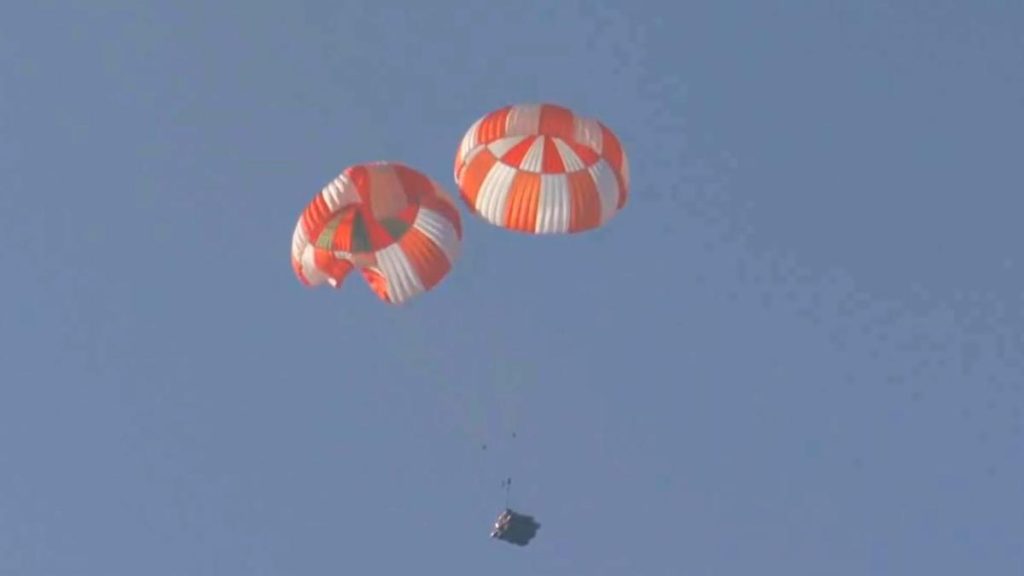SYLLABUS:
GS-3: Awareness in the fields of Space.
Context: Recently, the Indian Space Research Organisation (ISRO) conducted a crucial test of the main parachutes for the Gaganyaan Crew Module at the Babina Field Firing Range, Jhansi, 2025.
More on the News
• The test was part of the Integrated Main Parachute Airdrop Tests (IMAT) series undertaken to qualify the parachute system for India’s first human spaceflight mission, Gaganyaan.
• This experiment aimed to validate the parachute system’s performance during extreme scenarios such as a delay in the opening of one of the main parachutes.
• The first crewed Gaganyaan mission is scheduled for 2027, with the first uncrewed test mission expected by the end of 2025.
About the Main Parachute Test
• This test used a platform with a mass equivalent to the Gaganyaan Crew Module, dropped from an altitude of 2.5 km using an Indian Air Force IL-76 aircraft.
• This test sequence included the deployment of a drogue parachute followed by two main parachutes, one of which opened later to simulate delay conditions.
• The main parachutes of the Gaganyaan mission deploy in a step-by-step process known as reefed inflation. In this process, the parachute first opens partially, which is called reefing, and then fully opens after a predetermined period of time, known as disreefing. This process is carried out using a pyro device.
• This test simulated an “asymmetric disreefing” situation where one of the two main parachutes unfurled slightly later than the other.
• This test demonstrated the system’s structural integrity and proper load distribution under asymmetric disreefing, one of the most critical descent conditions.
• This test was successfully completed as the parachute sequence executed flawlessly, achieving a stable descent and soft landing.
Gaganyaan Mission
• It is ISRO’s first human spaceflight mission, aimed at demonstrating India’s indigenous capability to send humans into low-Earth orbit.
• The objective of the Gaganyaan mission is to send Indian astronauts to low-earth orbit by 2027.
• The mission will use the GSLV Mk-III (LVM-3) launch vehicle to carry the crew and associated modules.
• It consists of two main components – the Crew Module (to carry astronauts) and the Service Module (to provide power and support using liquid propellant engines).
• The programme includes two uncrewed flights (G1 & G2) – with the second carrying Vyommitra, a female humanoid robot – followed by a crewed flight (G3) carrying three astronauts, including one woman, for seven days in orbit at 300–400 km altitude.
• With this, India will become the fourth nation after the US, Russia, and China to undertake a human spaceflight mission.
UPSC Mains Practice Question
Discuss the significance of ISRO’s recent main parachute test for the Gaganyaan Crew Module in the context of India’s human spaceflight mission. How does this test contribute to the safety and reliability of the mission?

